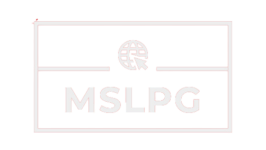Become a Proofreader: A Complete Guide!

Proofreading is an important part of any writer’s arsenal. It can help you catch errors and make your writing as error-free as possible. Fortunately, becoming a proofreader is not as difficult as it may seem. In this blog post, we will outline the steps you need to take in order to become a proofreader. From education to certification, read on to learn everything you need to know in order to make the jump into the world of editing.
What is Proofreading?
Proofreading is the process of reviewing and correcting text to ensure that it meets professional standards. A proofreader can be hired to work on a project as an individual or part of a team, and they are typically responsible for checking grammar, spelling, punctuation, and accuracy. Proofreading can be done manually or with software. This type of profession is essential for books, newspapers, magazines, etc.

Types of Proofreading
There are many different types of proofreading and each has its own set of skills and requirements. Here’s a look at the three most common types:
1. Technical Proofreading. This type of proofreading generally focuses on ensuring the accuracy of grammar, spelling, and punctuation. Technical proofreaders may also be responsible for checking for formatting issues, such as broken links or improper use of headings and list items.
2. Content Proofreading. This type of proofreading focuses on ensuring the text complies with company or project standards. Content proofreaders may also check for factual errors, inconsistencies in information, or poor sentence structure.
3. Copyediting. Copyeditors are generally responsible for correcting all aspects of a document—from typos to structural problems. Their work often includes making sure the language is concise and error-free, as well as improving readability overall.
The Process of Proofreading
Proofreading is a process of reviewing and correcting text for grammatical errors, typos, and other potential errors. It can be an important part of the editorial process, ensuring that content is accurate and error-free.
A proofreader should have both accuracy and editing skills, as well as an understanding of grammar and style. In order to become a proofreader, you need to have a strong command of the English language. You should also have excellent editing skills, as proofreading involves reviewing text for both grammar and punctuation mistakes.
The best way to learn how to become a proofreader is by doing it. Start by finding a project that you are interested in and become familiar with the different stages involved in the editing process. Once you have mastered these basics, find opportunities to work on the copy that is less than perfect. By doing this, you will develop your skills quickly while also receiving feedback from more experienced editors.

How to Become a Proofreader
Proofreading is a skill that can be used in many different fields. It is important to know what types of proofreading are available and which qualifications are needed for each type.
There are three main sorts of proofreading: editorial, technical, and content. Editorial proofreading is done by editors or other senior staff members to check the accuracy of the text. Technicians do technical proofreading to check for grammar, spelling, and other errors in the text. Content proofreading is done by people reviewing articles or other written material to ensure it is accurate, complete, and error-free.
To become a proofreader, you will need some skills and experience. You should have good editing skills and knowledge of grammar and spelling. You also need experience reviewing written material for accuracy and completeness.
Conclusion
We hope this blog article has provided you with everything you need to know to become a proofreader. This profession can give you numerous professional experiences and chances to develop yourself in many ways. By following the steps outlined, you will be on your way to a career in editing. Thank you for reading this blog article, and feel free and welcome to continue doing it in the future!
Also read: How to Start a Career as a Content Writer
